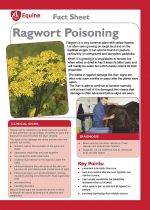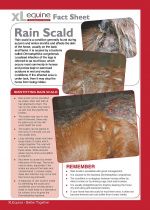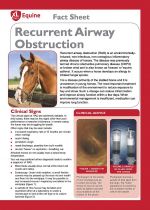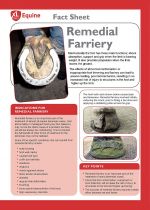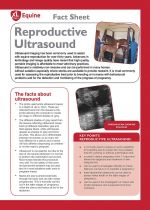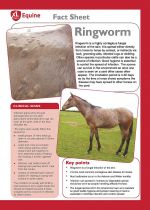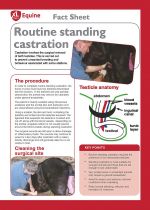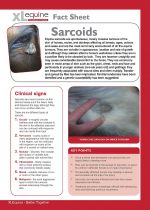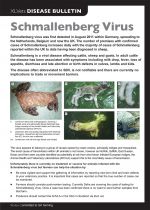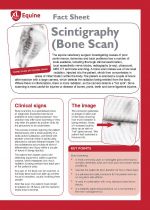Factsheets -
Below are Word and PDF files of our Factsheets. You will need Adobe Reader to view the PDF files - if you need to download Adobe Reader please click here.
Please note: some of these factsheets are several pages long and are large files, so please be patient when downloading!
Ragwort Poisoning
Ragwort is a very common plant with yellow flowers. It is often seen growing on rough land and on the roadside verges.
Rain Scald
Rain scald is a condition generally during autumn and winter months and affects the skin of the horse, usually on the back and the flanks.
Recurrent Airway Obstruction
Recurrent airway obstruction (RAO) is an environmentally induced, non-infectious, non-contagious, inflammatory airway disease of horses.
Remedial Farriery
Mechanically the foot has three main functions; shock absorption, support and grip when the limb is bearing weight. It also provides propulsion when the limb leaves the ground.
The effects of abnormal conformation or inappropriate foot trimming and farriery can lead to uneven loading, poor biomechanics, resulting in an increased risk of injury to structures in the foot and higher up the limb.
Reproductive Ultrasound
Ultrasound imaging has been commonly used to assist with equine reproduction for over thirty years. Advances in technology and image quality have meant that high quality, portable imaging is affordable to most veterinary practices. Ultrasound is relatively non-invasive and can be performed in many horses without sedation especially where stocks are available to provide restraint. It is most commonly used for assessing the reproductive tract prior to breeding or in mares with behavioural problems and for the detection and monitoring of the progress of pregnancy.
Ringworm
Ringworm is a highly contagious fungal infection of the skin. It is spread either directly from horse to horse by contact, or indirectly via tack, grooming aids, infected rugs or clothing. Other species in particular cattle can also be a source of infection. Good hygiene is essential to control the spread of infection. The spores can survive in the environment so once one case is seen on a yard other cases often appear. The incubation period is 4-30 days so by the time a horse shows symptoms the disease may have spread to other horses on the yard.
Routine standing castration
Castration involves the surgical removal of both testicles. This is carried out to prevent unwanted breeding and behaviour associated with some stallions.
Sarcoids
Equine sarcoids are spontaneous, locally invasive tumours of the skin of horses, mules, and donkeys affecting all breeds, ages, colours and sexes and are the most commonly encountered of all the equine tumours. They are variable in appearance, location and rate of growth and although they seldom affect a horse’s usefulness unless they are in a position likely to be abraded by tack. They are however unsightly and may cause considerable discomfort to the horse. They are commonly seen in moist areas of skin such as the groin, chest, neck and face and particularly in younger animals (one-six years old) and geldings; they are frequently associated with wound sites and often multiply. Transfer and spread by flies has been implicated. Familial tendencies have been identified and a genetic susceptibility has been suggested.
Schmallenberg
Schmallenberg virus was first detected in August 2011 within Germany, spreading to the Netherlands, Belgium and now the UK.
Scintigraphy (Bone Scan)
The equine veterinary surgeon investigating causes of poor
performance, lameness and back problems has a number of
tools available, including thorough clinical examination,
local anaesthetic nerve blocks, radiography (x-ray), ultrasound,
MRI, CT and bone scanning. A bone scan makes use of low level
radiation, injected into the patient, which then concentrates in
areas of inflammation within the body. The patient is scanned a couple of hours after injection with a large camera, which detects the radiation being emitted from the body. Where there is inflammation, there is more radiation, so the camera detects a “hot spot”. Bone scanning is most useful for injuries or disease of bones, joints, teeth and some ligament injuries.
